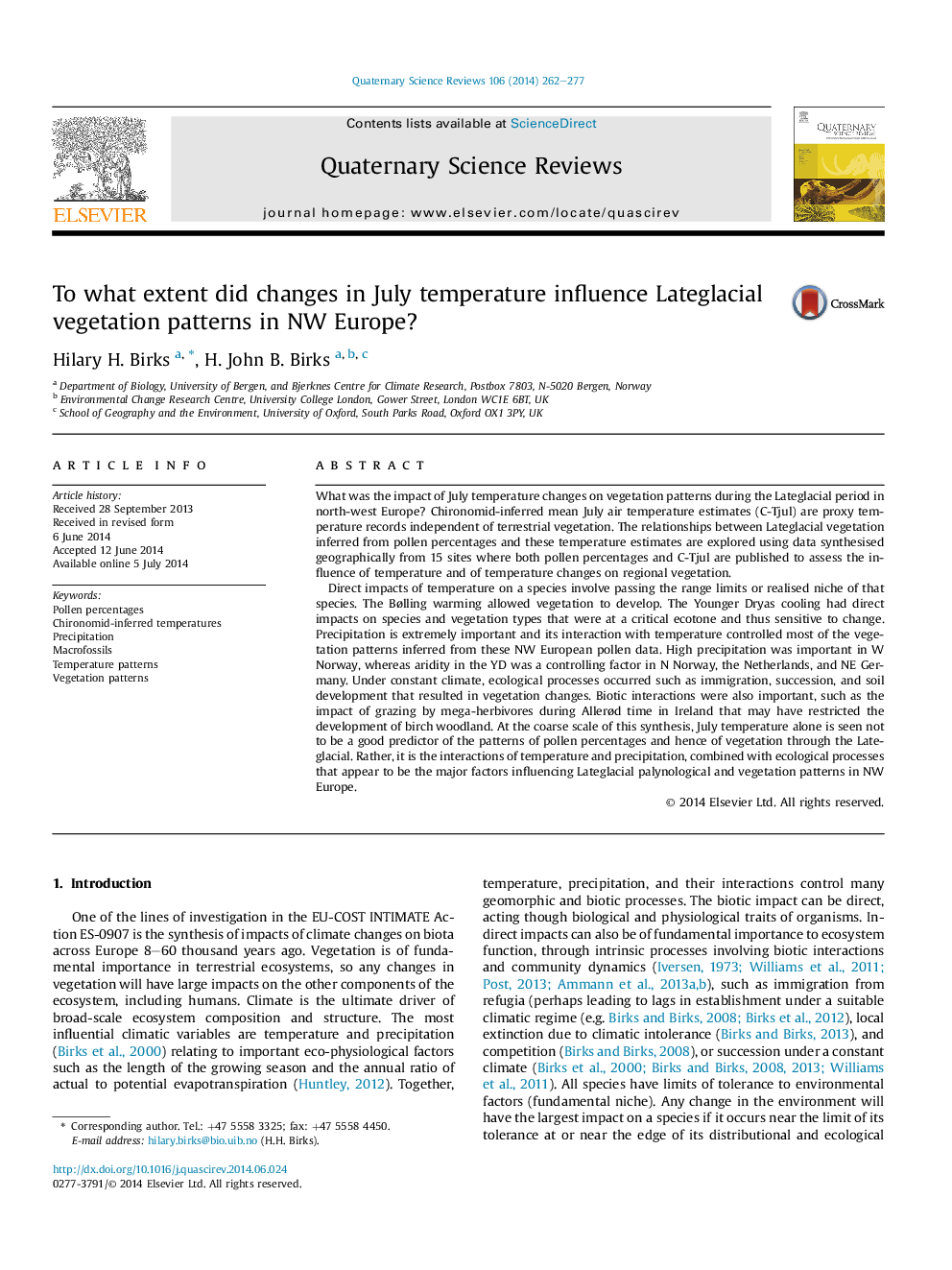| Article ID | Journal | Published Year | Pages | File Type |
|---|---|---|---|---|
| 6446097 | Quaternary Science Reviews | 2014 | 16 Pages |
Abstract
Direct impacts of temperature on a species involve passing the range limits or realised niche of that species. The Bølling warming allowed vegetation to develop. The Younger Dryas cooling had direct impacts on species and vegetation types that were at a critical ecotone and thus sensitive to change. Precipitation is extremely important and its interaction with temperature controlled most of the vegetation patterns inferred from these NW European pollen data. High precipitation was important in W Norway, whereas aridity in the YD was a controlling factor in N Norway, the Netherlands, and NE Germany. Under constant climate, ecological processes occurred such as immigration, succession, and soil development that resulted in vegetation changes. Biotic interactions were also important, such as the impact of grazing by mega-herbivores during Allerød time in Ireland that may have restricted the development of birch woodland. At the coarse scale of this synthesis, July temperature alone is seen not to be a good predictor of the patterns of pollen percentages and hence of vegetation through the Lateglacial. Rather, it is the interactions of temperature and precipitation, combined with ecological processes that appear to be the major factors influencing Lateglacial palynological and vegetation patterns in NW Europe.
Related Topics
Physical Sciences and Engineering
Earth and Planetary Sciences
Geology
Authors
Hilary H. Birks, H. John B. Birks,
